Statistics: New clients 2021
New proposals and decisions on the admission of a person to the NAS
In 2021, the NAS received 300 proposals for clients. The assumed victim of human trafficking was usually referred to the NAS by the Finnish Immigration Service and the reception centres for asylum seekers. In 40 cases, the victim of human trafficking sought admission independently.
A considerable number of potential clients are also referred by legal aid, Victim Support Finland or mother and child homes, and shelters for victims of domestic violence. The number of potential victims referred to the NAS by the police was seven, which is considerably lower than the previous years’ figure, 25. Social services referred 11 clients to the NAS.
Parties referring clients to the NAS in 2021 – 300 proposals
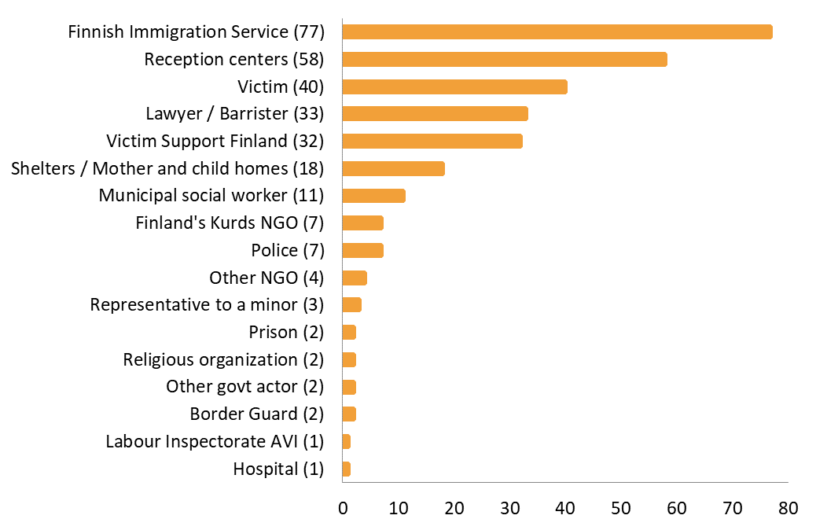
Figure 1. Proposals for clients received by the NAS in 2021 by the referring party (n=300). Click on image to enlarge.
Decisions made in 2021 (425 decisions)

Figure 2. Decisions made by the NAS in 2021 by type of decision (n=425)
New clients in the NAS in 2021
The number of new clients admitted to the NAS in 2021 was 243. Of these, 215 were adults and 28 minors. In addition, 48 children in the custody of the clients were admitted to the system.
New clients (243+48)
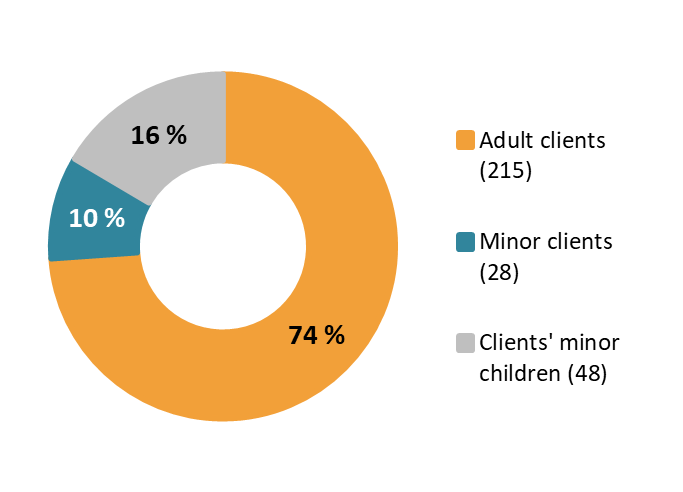
Figure 3. The proportion of adults, minors, and clients’ children out of all new clients (n=291). As no statistics are gathered on the minors admitted to the NAS, the figures below illustrate the situation among the 243 new clients only.
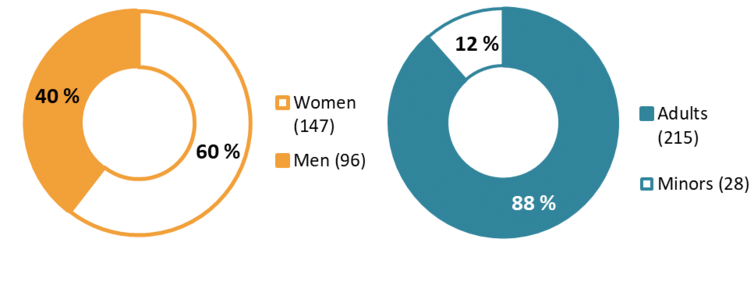
Figure 4. Genger distribution among new clients and the proportion of adult and minor clients out of all new clients (n=243)
More children under the age of 18 were admitted to the NAS than in previous years.One third of all new clients, approximately 80, reported having been victims of human trafficking as minors.Of these, 52 had been referred to the NAS after they had reached adulthood.
The age distribution among new clients (243)
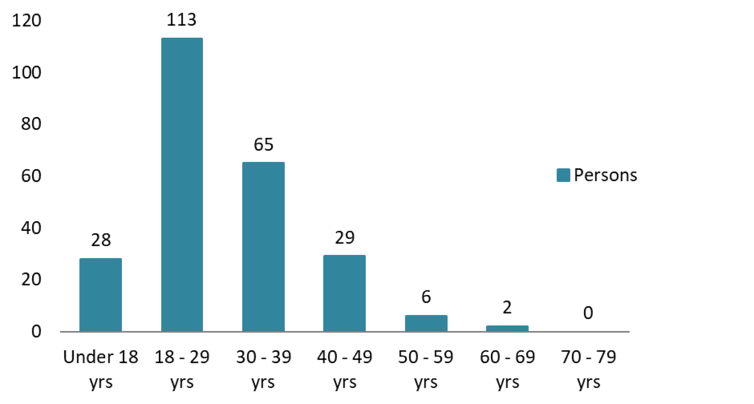
Figure 5. New clients by age group (=243).
The number of clients who were forced into marriage was significantly higher than in previous years. In 2020, the number of admitted clients in a forced marriage was 45, while in 2021 the figure reached 63.
The number of victims of human trafficking linked to forced labour was 105 and to sexual exploitation 68. Four clients who had been exploited for criminal activities and one who had been exploited for benefit fraud were admitted.
In 2021, no new clients were admitted who had been exploited for begging, as a child soldier or for trafficking in human organs and tissue.
Purpose of exploitation: new clients (243)
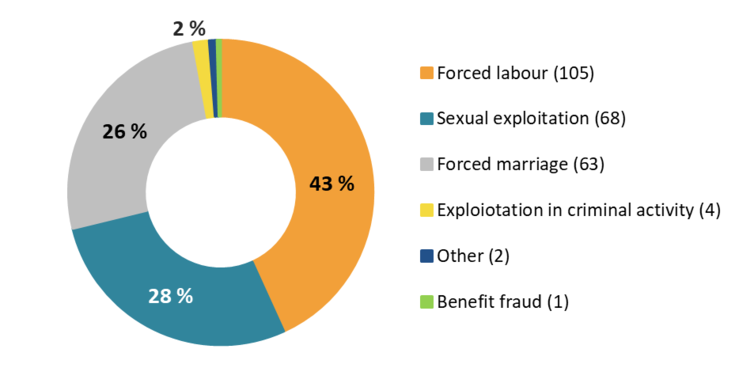
Figure 6. New clients by purpose of exploitation (n=243)
Women and girls were targets of human trafficking related to forced marriages, in particular. The next most common type of exploitation was sexual exploitation or forced labour.
Men and boys were most commonly victims of forced labour. However, men and boys can also be subjected to sexual exploitation and, for example, forced marriage.
Purpose of exploitation: women and girls (135)
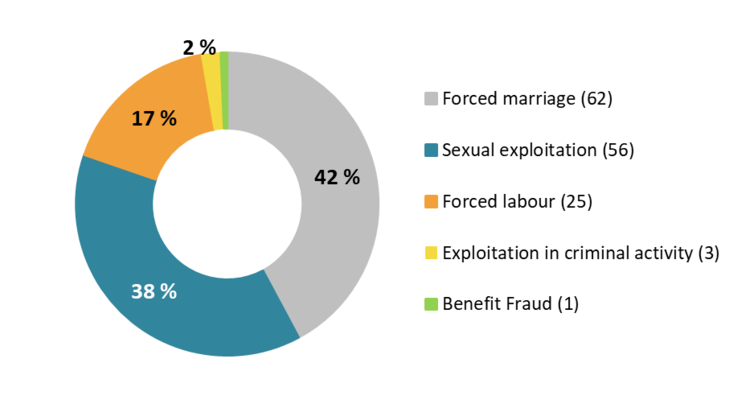
Figure 7. Purpose of exploitation for women and girls (n=135).
Purpose of exploitation: men and boys (96)
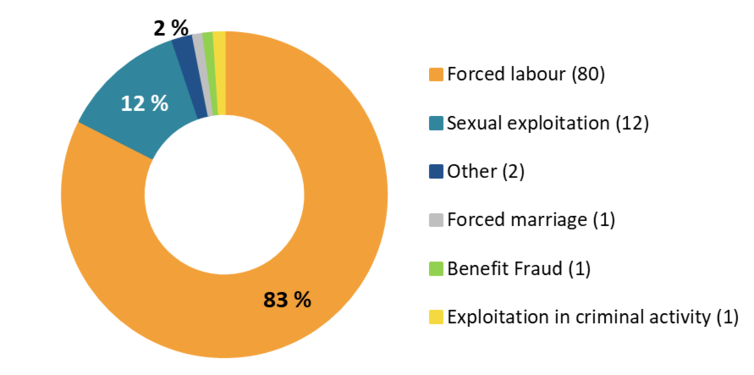
Figure 8.New male clients by purpose of exploitation (n=96)
Of the new clients, 97 reported having fallen victim to human trafficking in Finland while for 146 the exploitation had taken place abroad. More details about the new clients who were subjected to exploitation in Finland are provided below.
Purpose and location of exploitation: abroad (146)/ in Finland (97)
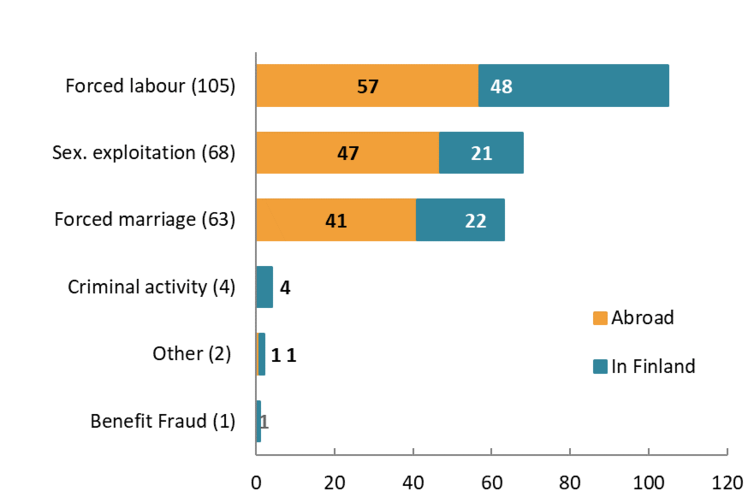
Figure 9. New clients by purpose and location of exploitation (n=243).
Of the new clients, 148 (61 percent) had arrived in Finland as asylum seekers. Fifty-seven of the new clients resided in Finland under a residence permit and five had arrived in Finland on a visa or as an EU citizen. Of the new clients, 17 had Finnish citizenship. The same number of new clients resided in Finland without legal residence.
New clients by residence status (243)
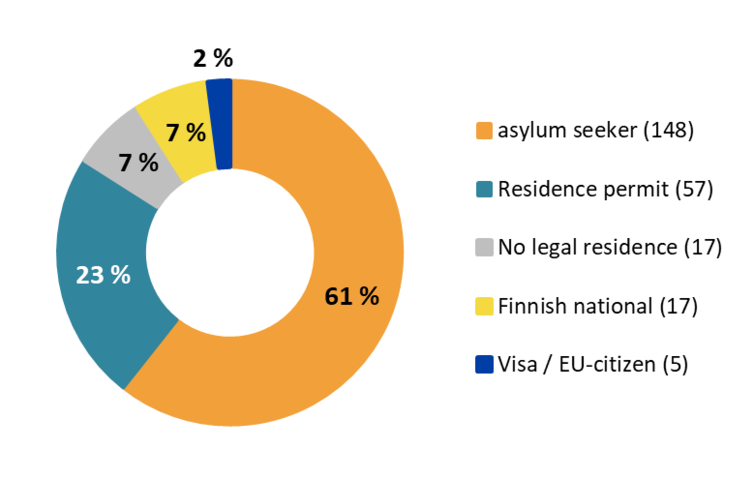
Figure 10. New clients by residence status (n=243)
New clients (243): top nationalities
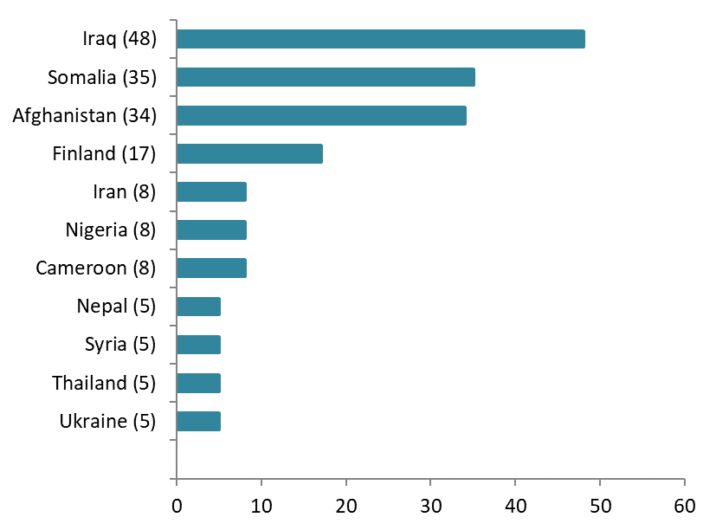
Figure 10.1. The new clients represented 44 different nationalities. The nationality of three persons is unknown. The assistance system publishes information only on those nationalities with five or more representatives among the clients. The top nationalities among new clients in 2021 were Iraq, Somalia, Afghanistan, and Finland.
New clients admitted as minors in 2021
In 2021, a record number of new clients admitted to the NAS were minors. Of the 28 minor clients, 27 reported having been exploited abroad and one in Finland.
The most usual form of exploitation in the case of minors was forced labour or forced marriage. A majority of the new clients under 18 were of asylum seeker background.
One third of the 243 new clients (80 clients) reported having fallen victim to human trafficking as minors although they sought assistance from the NAS only after they had reached adulthood.
Read the press release issued by the NAS on 21 January 2022 for more information about minors who have fallen victim to human trafficking.
New clients admitted as minors (28): by gender
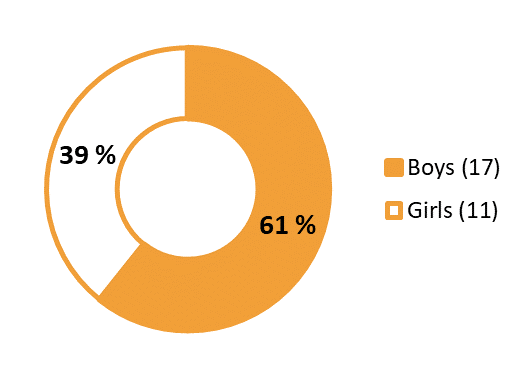
Figure 11. Proportion of children of the new clients (n=28).
New clients admitted as minors (28): by purpose of exploitation

Figure 12. New clients admitted as minors by purpose of exploitation (n=28).
New clients who have fallen victim to human trafficking in Finland
Of the new clients, 97 were identified as having fallen victim to trafficking in Finland or partly in Finland*. Compared to the previous year, a slightly lower number of victims of forced labour taking place in Finland was identified in 2021. In 2020, the number of identified victims of forced labour was 78, while in 2021 this figure was 48. Labour exploitation was identified, in particular, in the cleaning, restaurant and construction businesses and to some degree in the beauty industry and agricultural work.
The number of suspected victims of sexual exploitation taking place in Finland was slightly higher than in the previous year. The identified cases were usually linked with prostitution.
Clients forced into marriage can be divided into five main categories:
- Forced marriage that has started in the home country, usually when the victim is still a minor. The family has then moved to Finland, where the situation has continued unchanged.
- The victim has been married to a person residing in Finland and forced or pressured into arriving in Finland.
- The victim has been forced into marriage in Finland or they are threatened with forced marriage.
- The victim has been removed from Finland to enter into a forced marriage.
- A spouse arriving in Finland through an arranged marriage will find themselves in conditions indicating forced marriage and will be unable to leave the marriage without serious threat and pressure related to a code of honour or otherwise imposed on the person by their community.
* ‘Partly in Finland’ refers to cases in which the exploitation has started abroad and continued in Finland and to cases in which the exploitation has started in Finland and continued elsewhere.
Clients exploited in Finland: gender distribution
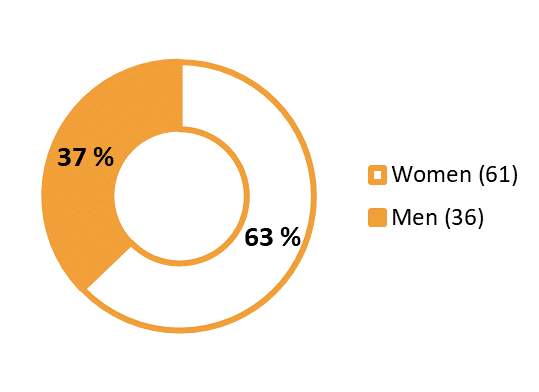
Figure 13. Sixty-three percent of the victims of human trafficking in Finland were women (n=97).
Clients exploited in Finland: purpose of exploitation
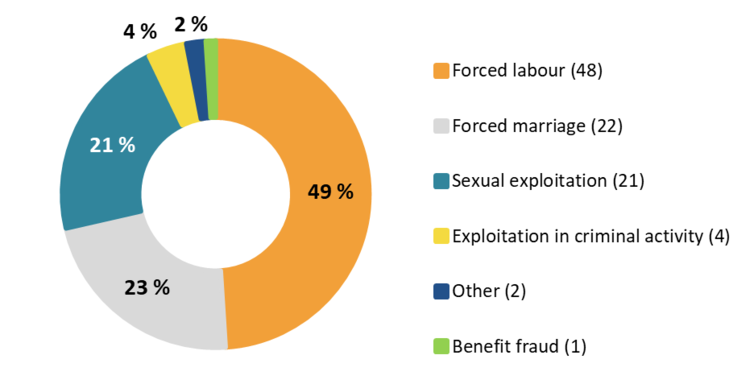
Figure 14. The most common types of exploitation were forced labour and forced marriage. (n=97)
Clients exploited in Finland: top nationalities
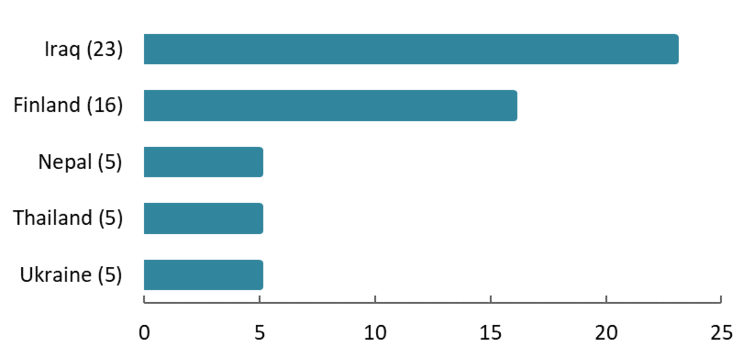
Figure 15. The victims of exploitation taking place in Finland represented several different nationalities. The figure shows nationalities with five or more clients in the NAS. The top nationalities were Iraq, Finland, Nepal, Thailand, and Ukraine (n=97).
The victims of exploitation taking place in Finland were usually in the country under a residence permit. The residence permit had usually been granted on the basis of employment or family ties. In addition, 20 asylum seekers, 16 Finnish citizens and three EU citizens or persons arriving in Finland under a visa had fallen victim to exploitation while in Finland. Thirteen clients had no legal residence.
Clients exploited in Finland: residence status
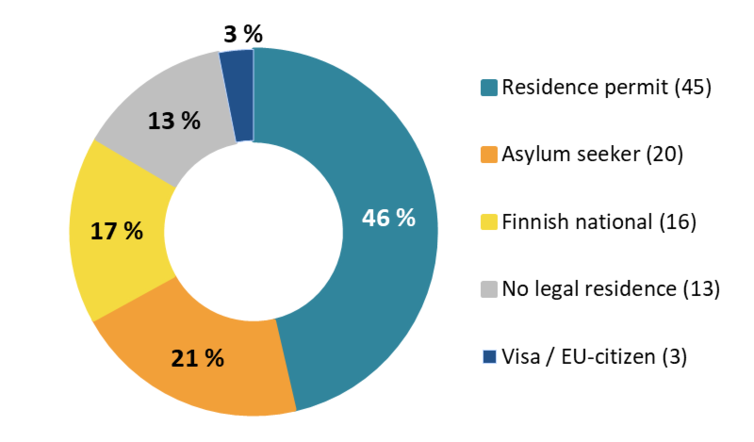
Figure 16. Victims exploited in Finland by residence status (n=97).
The number of identified victims of human trafficking or an associated offence taking place in Finland has increased year by year. In 2021, however, the number of victims identified was slightly smaller than in the record year of 2020. In 2020, several groups of 3–11 workers were identified who had fallen victim to forced labour in Finland. In 2021, mainly individual victims rather than groups of victims were identified.
Clients exploited in Finland 2016–2022
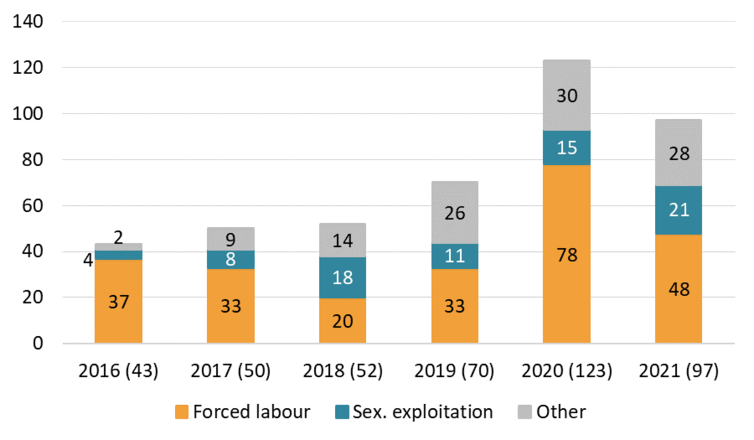
Figure 17. New clients who had fallen victim to human trafficking 2016–2021. The largest group of exploited victims identified in Finland was those in forced labour. The category “Other” includes victims of forced marriages, the number of whom has been on a consistent increase since 2017.